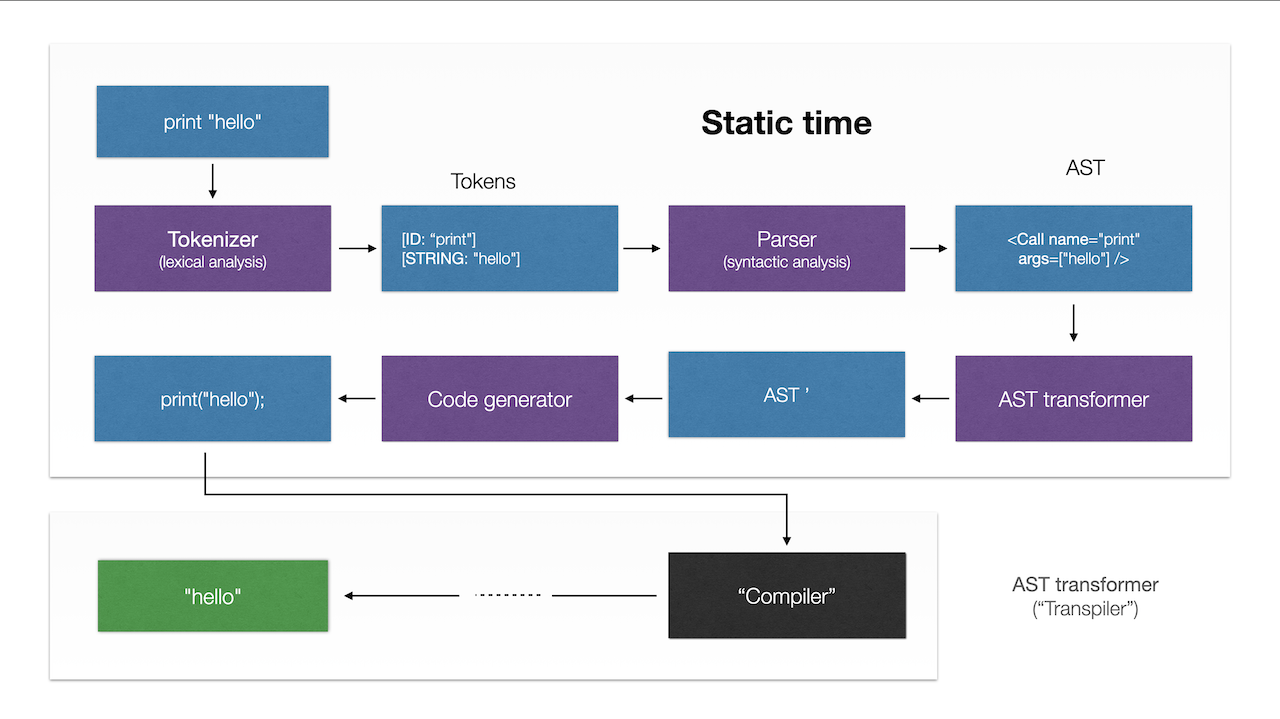Course overview
In recent compilers implementation, it became popular to translate from one high-level language to another high-level language. Examples might be desugaring new version of JavaScript to an older version of JavaScript, or languages like TypeScript, etc. Such high-level compilers are known today as transpilers, and what is the topic of our course.
It proved to be very practical, since we can fully rely on an existing runtime such as a JavaScript engine, avoid dealing with lower-level constructs like memory, bytecode instructions, etc.
If you would like to explore the world of compilers and implement your own programming language, starting from the high-level compilation is a good hands-on practical approach, and which we apply in this class.

Often related books on compilers go to theoretical aspects, stucking in parsing, regular grammars, etc – not explaining how actually to build a practical transpiler. I believe we should be able to build a transpiler for a full programming language, end-to-end, in 2-4 hours — with a content going straight to the point, showed in live coding sessions as pair-programming and described in a comprehensible way.
In the Building a Transpiler from scratch class we focus on compiling a high-level concurrent programming language with message-passing processes, down to JavaScript. That is, in addition to the deep dive on the transpiling, you will get a better understanding of how concurrent functional languages, such as Erlang, or even an operating system itself with its processes and threads, work today.
Implementing a transpiler will also increase your engineering level, as it touches several aspects of data structures and algorithms.
